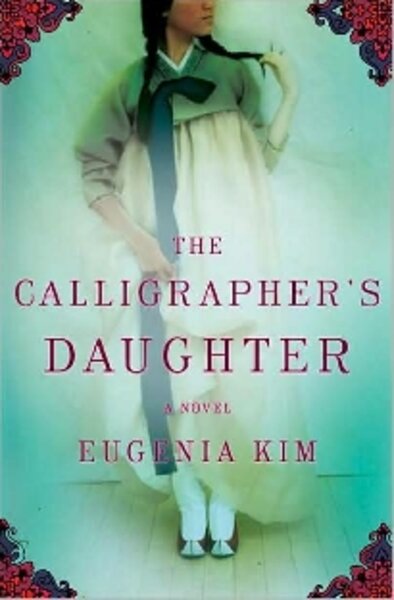The Calligrapher’s Daughter
It might be the fashion today to name girls after cities: Brooklyns, Savannahs, and Parises show up in plenty of elementary classrooms. But in 1915 Korea, it was rather a different matter.
The protagonist of The Calligrapher’s Daughter was born the year Japan occupied Korea, and her father, a scholar whose art had won favor with the royal family, couldn’t bear to name her.
So for years, Eugenia Kim writes in this debut novel based on the life of her mother, she was known as “the daughter of the woman from Nah-jin.” That rather unwieldy title got shortened when a missionary, whose Korean was a little shaky, misunderstood and inadvertently christened her Najin. This wasn’t exactly an auspicious moniker, at least as far as her Confucian father Han was concerned. But then, his only daughter didn’t really please him at, well, anything.
In fact, while he knows it isn’t fair, Najin remains for him a symbol of his beloved country’s oppression and his own family’s decline. Fortunately, she spends most of her time with her mother, Haejung, a model of Christian serenity – at least until her beloved daughter’s welfare is at stake. She fights tenaciously for Najin to get an education, without ever once raising her voice or nagging.
For example, when Han decides to marry the 14-year-old Najin to the son of an old colleague, her mother and aunt go behind his back and wangle a court appointment for her in Seoul. While Najin does acquire polish serving the doomed royal family, there’s also a handy girls’ high school nearby.
Less easy to manage are the Japanese, who slowly strip away everything the aristocratic Hans have owned for the past 500 years. “The Calligrapher’s Daughter” takes a contemplative pace, as it chronicles the life of one family under 30 years of Japanese oppression. Kim doesn’t play down the privations or brutality of those years, nor does she indulge in graphic descriptions that would offend the exquisite manners of her characters. (The unspoken rules are so elaborate, I felt as if I needed an etiquette course to approach the book properly.) Sometimes, the result can seem a little distant, with a few chapters in the beginning sounding like someone reminiscing from a distance of decades. And exposition occasionally overtakes storytelling, although that becomes less noticeable as the book progresses.
But a girl balancing loyalty to her family with a desire to move beyond the narrow confines proscribed for her has struck a chord since Mulan (the original Chinese tale, not the Disney movie). Kim builds a patient spell, carefully orienting American readers who probably know little of this chapter of history. And with Najin having to face the Great Depression, World War II, and life under an occupying force – as well as a disapproving father – readers can hardly complain of boredom.
Fans of Lisa See’s or Amy Tan’s novels should eagerly embrace Najin, and “The Calligrapher’s Daughter” bids fair to become a staple of book clubs. While the story is Najin’s, its true subject is Korea’s occupation by Japan. “Only much later did I understand that the sweeping change of those years demanded the stringent practice of our rituals and traditions; to venerate their meaning, yes, but also to preserve their existence simply by practicing them,” Najin recounts.
Her mother teaches young Najin by scratching words with a needle onto stiff cloth, and then rubs the marks away. Han gives up his life’s work, because he refuses to pollute his art by selling it – especially to the Japanese.
Much the way that the English outlawed kilts and Gaelic in Scotland, upper-class Koreans aren’t allowed to wear white and children are taught in Japanese. Like something out of Orwell, Najin’s father is tortured by the Thought Police, and there are “clean-house inspections” that allow Japanese officials to enter people’s homes whenever they wish.
While Najin’s stern father and Bible-quoting mother seem rather clichéd on the surface, Kim manages to make them anything but cardboard. Calligrapher Han’s most difficult qualities are also what make him admirable: his Confucian ideals, moral certainty, and stubborn unwillingness to abandon Korea’s traditions. Haejung may seem utterly passive. But at the same time that she’s counseling obedience, she’s the force driving her daughter into the modern era and the steel core that keeps the Hans together under the worst conditions.
And Najin herself wins the sympathy of modern readers without feeling like an anachronism plunked down among historical wallpaper – a tricky balance for any writer. I found the novel’s ending abrupt, but realized afterward that that partly stemmed from my reluctance to let “The Calligrapher’s Daughter” go.
Yvonne Zipp regularly reviews fiction for the Monitor.






